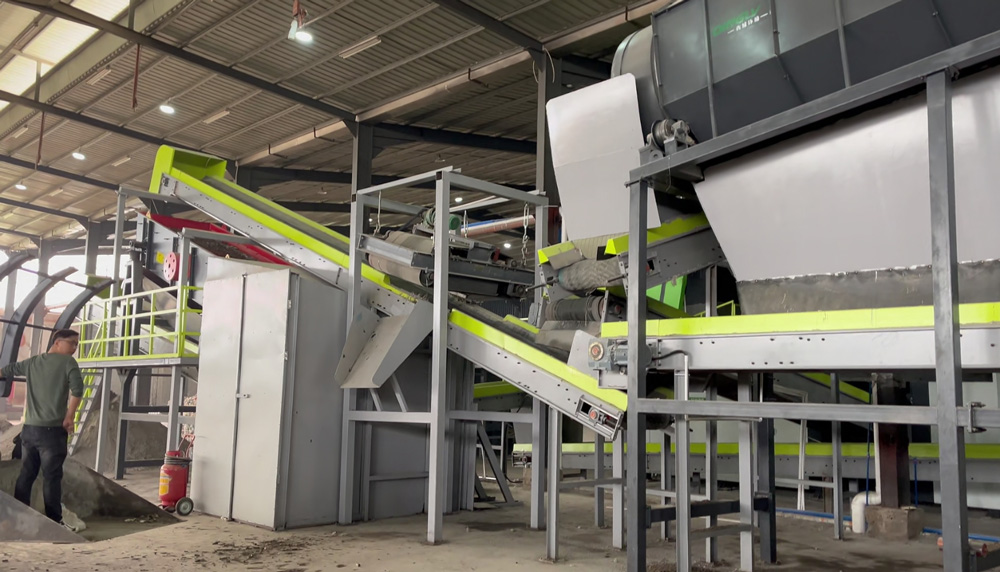 Time:2025-03-24
Time:2025-03-24
 Source:青绿环境
Source:青绿环境
In the metabolism of urban development, construction waste is like a "hidden treasure." To achieve its recycling and utilization, waste sorting equipment is the key to unlocking this treasure.

Construction waste is complex in composition, containing a variety of materials such as concrete blocks, metals, wood, and plastics. Advanced sorting equipment acts like a precise "sorting master," opening the door to resource recycling and utilization.
Magnetic separation equipment is a "powerful tool" for dealing with metal components in construction waste. It generates a strong magnetic field that quickly adsorbs and separates metal products such as rebar and wire from the waste mixture. Whether it is the thick rebar from demolished buildings or the thin metal wires in renovation waste, nothing escapes its "scrutiny." It efficiently collects metals, providing pure raw materials for subsequent metal recycling and processing.
Optical sorting equipment, with its "keen eyesight," identifies materials based on the differences in light reflection and refraction of various substances. As construction waste moves along the conveyor belt, optical sensors quickly scan and accurately distinguish non-metallic materials such as plastics and glass. For example, polystyrene foam often gets mixed in, but optical sorting can precisely separate it, allowing it to enter specialized plastic recycling channels to be remade into plastic products or used for other industrial purposes.
There are also intelligent sorting robots that combine image recognition with mechanical grasping technology. They can "understand" the shapes of construction waste. For large concrete blocks and masonry, the robots can use their flexible mechanical arms to grasp and place them into designated areas according to preset programs, further refining the sorting process and improving the efficiency of subsequent treatment.
The collaborative operation of these sorting devices makes the transformation of construction waste into valuable resources more than just a concept. Metals can be remelted and recast into new steel; concrete blocks, after being crushed and screened, can be turned into recycled aggregates for use in road subbase construction or the production of recycled concrete blocks; plastics can be converted into new plastic products and reintroduced into the usage cycle.
Starting with the application of construction waste sorting equipment is an important step in advancing the recycling and utilization of construction waste onto a more efficient and scientific track. It injects continuous momentum into urban green development and weaves a win-win picture of environmental protection and economic benefits within the network of resource recycling.













 Prev
Prev











